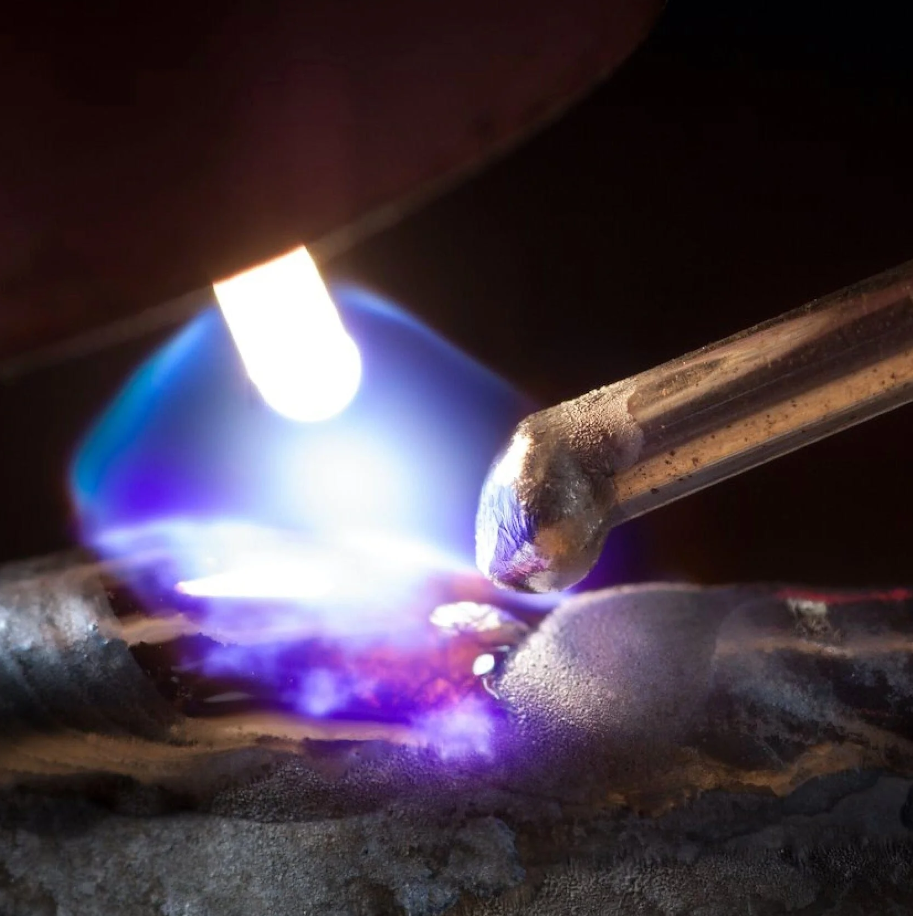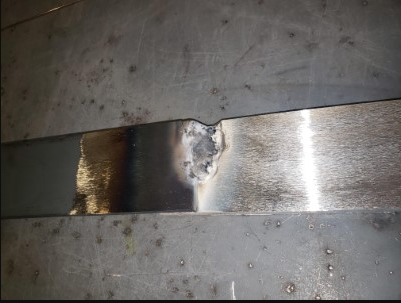Titanium, due to its reactive nature, cannot be easily welded using the MIG process.
Metals Commonly Welded using MIG
MIG welding, also known as Gas Metal Arc Welding (GMAW), has become a staple technique in many industrial and hobbyist settings due to its versatility. It allows for the welding of a wide variety of metals, making it a popular choice among welders.

Steel and Its Alloys
Steel, primarily composed of iron and carbon, is one of the most frequently MIG-welded materials. Its weldability, strength, and affordability make it a primary choice for numerous applications. Different steel alloys, varying in their carbon content and additional alloying elements like manganese, chromium, and nickel, can all be welded using MIG. The choice of shielding gas (often a mix of CO2 and Argon) plays a pivotal role in ensuring a good weld quality. Popular steel alloys include:
- Carbon Steel: Used in a multitude of structural applications.
- High-Strength Low-Alloy Steel: Common in automotive and construction industries.
- Tool Steel: Utilized in manufacturing tools due to its hardness.
Read more about Steel and its Alloys on Wikipedia
Aluminum and Its Alloys
Aluminum is another metal that’s frequently welded with the MIG process. Due to its lightweight and corrosion-resistant properties, aluminum and its alloys find applications in sectors like aerospace, automotive, and marine. Welding aluminum requires a pure Argon shielding gas and aluminum-specific welding wire. Some of the common aluminum alloys include:
- 6061: Known for its strength and versatility.
- 5052: Renowned for its corrosion resistance.
- 7075: High-strength alloy often used in the aerospace sector.
Read more about Aluminum and its Alloys on Wikipedia
Stainless Steel
Stainless steel, known for its resistance to corrosion and staining, is another metal that can be MIG welded. It is an alloy of iron, carbon, and at least 10.5% chromium content. The addition of other elements like nickel and molybdenum provides added resistance to corrosion. Different types of stainless steel suitable for MIG welding include:
- Austenitic Stainless Steel: Non-magnetic and has a high chromium and nickel content.
- Ferritic Stainless Steel: Magnetic and has a high chromium, low carbon content.
- Duplex Stainless Steel: Has a dual structure of austenite and ferrite.
Learn more about Stainless Steel on Wikipedia
Other Common Metals
While steel, aluminum, and stainless steel are the primary metals welded using MIG, there are other metals and alloys also suitable for this welding process. These include:
- Magnesium: Light in weight and commonly used in automotive applications.
- Copper and Copper Alloys: Known for their excellent conductivity.
- Silicon Bronze: Offers a combination of strength and conductivity.
Discover more about Magnesium on Wikipedia
Metals That Pose Challenges in MIG Welding
MIG welding, despite its broad applicability, doesn’t work seamlessly with every metal. Some metals present unique challenges due to their inherent properties, which can make MIG welding them problematic. Understanding these challenges is crucial to ensure the integrity of the weld and safety during the welding process.
Factors Determining Weldability
Weldability refers to the capacity of a metal to be welded under fabrication conditions into a specific, suitably designed structure, and to perform satisfactorily in that structure. Various factors impact a metal’s weldability:
- Chemical Composition: Metals with certain alloying elements can produce a weak weld or can lead to cracking.
- Thermal Conductivity: Metals that rapidly conduct heat might not weld properly as they can dissipate the heat too quickly.
- Melting Point: Metals with extremely high melting points require more energy to weld.
- Thermal Expansion: Discrepancies in thermal expansion rates can lead to warping or distortion.
Explore Weldability in Depth on Wikipedia
Reactive and Refractory Metals
Reactive and refractory metals include materials that either react strongly with other elements or have a high melting point. These metals are difficult to weld using MIG due to their inherent properties.
- Titanium: While it’s lightweight and strong, titanium can be reactive when exposed to contaminants, which can compromise the weld quality.
- Tantalum: Known for its high melting point and corrosion resistance, tantalum can be challenging to weld without inducing defects.
- Zirconium: Often used in nuclear applications, zirconium reacts adversely with contaminants, making a clean environment essential for welding.
Learn More about Refractory Metals on Wikipedia
Metals with High Thermal Conductivity
Metals with high thermal conductivity can dissipate heat rapidly, making it challenging to achieve a proper fusion between the base metals during welding.
- Copper: This metal is renowned for its thermal and electrical conductivity. When attempting to MIG weld copper, it may require more energy and a specific technique to ensure a proper bond.
- Silver: While not commonly welded in typical applications, silver’s high thermal conductivity poses challenges in the welding process.
- Gold: Like silver, gold is not a typical candidate for MIG welding but can be difficult due to its efficient heat dissipation.
Read more about Thermal Conductivity on Wikipedia
Why Certain Metals Cannot be Welded using MIG
MIG welding offers a versatile approach to joining metals. However, not every metal is compatible with this method. Several factors influence the suitability of a metal for MIG welding, with specific characteristics of certain metals making them more challenging, if not impossible, to weld using MIG.
Chemical Properties and Reactions
The chemical composition of metals plays a vital role in their weldability. Some metals can form undesirable compounds when melted, leading to weak welds.
- Alloying Elements: Some metals, when combined with certain elements, can form compounds that decrease weld quality. For instance, sulfur in steels can cause hot cracking.
- Oxidation: Metals like aluminum form a strong oxide layer which, if not adequately cleaned, can lead to weld contamination.
- Impurities: Traces of unwanted elements, such as phosphorous or sulfur, can lead to weak and brittle welds.
Delve deeper into Chemical Properties on Wikipedia
Physical and Mechanical Properties
The physical attributes of metals can also determine their weldability in a MIG process.
- Melting Point: Some metals have extremely high melting points, which MIG welding equipment might not reach. Tungsten, for example, requires much higher temperatures than MIG can typically deliver.
- Thermal Conductivity: As mentioned, metals like copper rapidly conduct heat, which can make achieving a proper melt challenging.
- Ductility: Metals with low ductility can become brittle when welded, leading to potential failure points.
Discover more about Mechanical Properties on Wikipedia

Heat Affected Zones and Metal Distortion
Welding doesn’t just affect the immediate area where metals are joined. The heat spreads, leading to potential issues.
- Heat Affected Zone (HAZ): This refers to the region that hasn’t been melted but has experienced changes in its microstructure due to the heat. In metals sensitive to temperature changes, this can lead to weakened areas.
- Warping: Due to uneven heating and cooling, metals can warp or distort near the weld area. This is especially prominent in thin sheets which can’t dissipate the heat uniformly.
- Residual Stresses: After welding, internal stresses can remain in the material, potentially leading to cracks or distortions over time.
Explore the concept of Heat Affected Zone on Wikipedia




